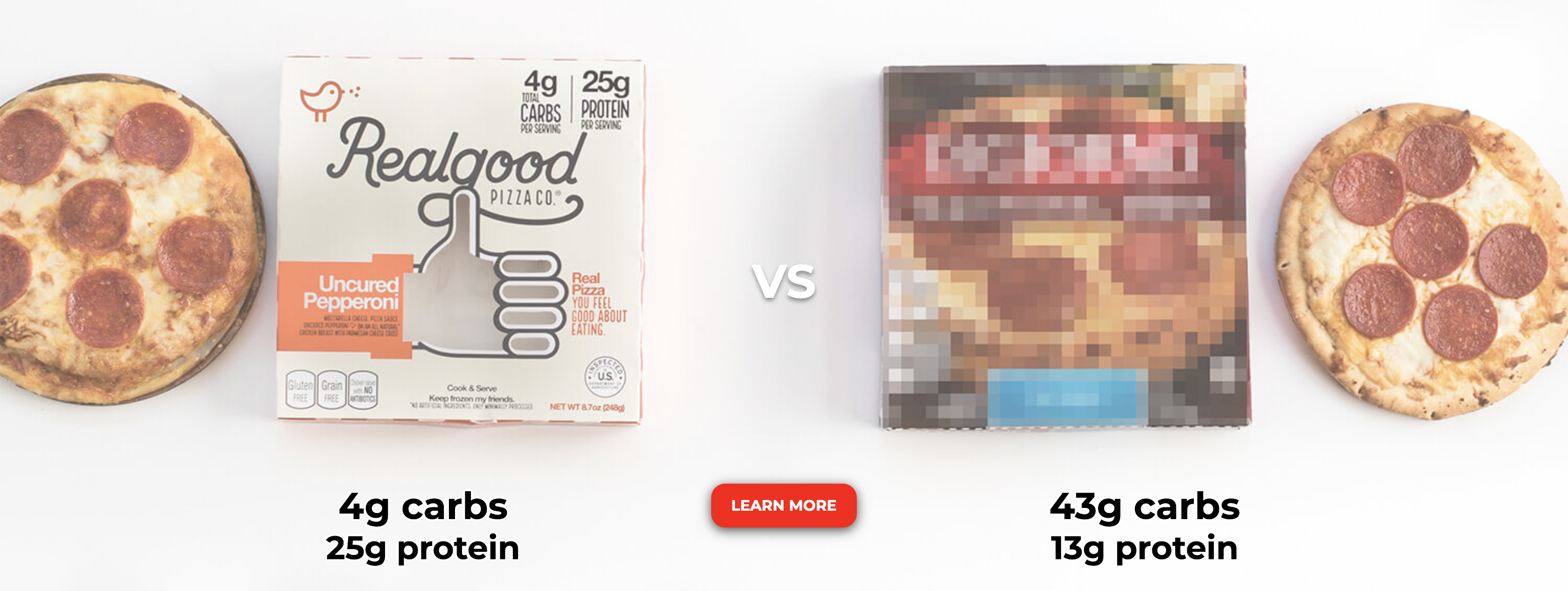How to Enjoy Your Favorite Foods with Type 2 Diabetes
Written by: T'ara Smith
6 minute read
January 7, 2019
Living with type 2 diabetes doesn't mean choosing between flavor and health.
Unsure about which foods to eat as a person living with type 2 diabetes? Are you wondering if you’ll ever enjoy another slice of pizza, or if switching to a diet with primarily healthy foods means you’ll never get to indulge your guilty pleasures again? To relieve your fears, the answer is of course you’ll be able to enjoy your favorite foods.
Living with diabetes doesn’t mean following a restrictive diet you won’t enjoy, however, it does mean making some slight adjustments to better control your blood sugar. Here are some tips to get you started.
Identify Your Blood Sugar Goals
What’s your blood sugar and A1C now and what do you want it to be by your next doctor’s visit? Set a range of numbers your blood sugar should be post-meal. These numbers vary per person, so ask your doctor or another member of your diabetes care team to help you set your goal. This makes it easier to adjust portion sizes and the timing of your meals.
Try New Brands at the Grocery Store
One of the best things about making changes to your lifestyle is discovering new food brands. There are plenty of brands that cater to people who seek low-carb, low-fat, low-sugar, or low-sodium options. For people with type 2 diabetes, those options are usually low-carb or low-sugar foods.
For example, Real Good Foods, believes in making delicious foods high in protein and low in carbs. They specialize in using real ingredients so their customers can feel “good.” One of the great things about this brand is their commitment to never using “weird sounding” ingredients or other processed grains, flours and other fillers.

When you read their labels, you’ll find ingredients you’d recognize. For example, their cauliflower crust pizza contains cauliflower, egg and cheese. Real Good Foods’ other single serve pizza crust is made of natural chicken breast and parmesan cheese.
You can also eat their food without worrying about rapid blood sugar spikes. Their chicken and parmesan crust pepperoni pizza has 4g of carbs and 25g of protein per serving, compared to another store-bought pizza that can contain up to 43g carbs and only 13g of protein. Love enchiladas? Then you’ll be happy to read their enchiladas contain 4g of carbs and 20g of protein. With these options, you don’t have to choose between flavor and controlling your blood sugar.
If Dining Out, Plan Ahead
Dining out is fun and a necessary part of having a healthy social life. But there are costs to the calories you eat when dining out—and I don’t just mean fast food. A study by the Journal of the Academy of Nutrition and Dietetics revealed non-chain and chain restaurants, alike, serve food with a huge excess in calories than what people actually need.
In an article published in TIME Magazine, some meals have enough calories and nutrients for an entire day. The recommended caloric intake is 2,000 calories per day; on average, restaurant meals contained 1,205 calories.
If you think about it, it’s not much of a shock. Think about your favorite Italian restaurant that serves pasta dishes that are bigger than your head, or think about the times you were so full, you thought someone needed to wheel you out of the restaurant. It’s clear to see how we can overeat.
This includes “healthy” options as well. Think a salad is the best option? Probably not, as some salads can contain more than 2,300 mg of sodium in a single meal.
TL;DR? Check out the nutritional content of the dishes from your favorite restaurants. Notice how many calories, fat, sodium and carbs are in them. Spoiler alert: too much.
So, as a person living with diabetes, what should you do?
Plan ahead.
Don’t go in blind—read the nutritional information for a restaurant and decide what you’re going to order before you go. Don’t read just the calories; also look at the sodium, fat, protein and of course, carbohydrates too. Ask the server if you can have certain meats grilled instead of fried, an extra serving of steamed vegetables or if vegetables can replace a starchy side, or if you can receive a to-go box when your food arrives. Predetermining your portion sizes at a restaurant can be challenging, but definitely not impossible.
Speaking of portion sizes…
Reduce Portion Sizes
One of the easiest adjustments to your diet you can make, today, is simply changing the size of your plate. No, not trying to eat foods you wouldn’t enjoy, but enjoying the same foods in smaller portions. If you’ve decided to never give up a burger and fries, fine, but eat a burger and fries on an appetizer plate instead of a full-sized dinner plate. You’re forced to reduce the amount of food you can fit on your plate. Also, eating from a smaller plate improves your perception of fullness and can help you eat less.
Try this method with any of your favorite dishes. If it can’t fit onto your smaller-sized plate, put it aside and save it for later. If you must eat on a full-sized dinner plate, add extra servings of vegetables or foods that won’t cause blood sugar spikes.
Make It at Home
So, maybe you enjoy eating a dish you know is bad for your blood sugars. You enjoy it so much that you would eat it every day, or most days. Instead of dining out, try making it at home. Cooking at home not only saves some inches on your waistline, but it’s better for your overall health. It’s easier on your wallet, too. Need more inclination to cook at home? See the above section on dining out.
Write a list of the ingredients of your favorite meal and buy them from the grocery store. For instance, if you enjoy chicken alfredo, your ingredients list might include:
- Chicken Breast or Boneless Skinless Thighs
- Heavy Cream
- Parmesan Cheese
- Garlic
- Olive Oil
- Pasta
- Italian Seasoning
- Salt/Pepper
Even with this list as is, your meal is already healthier because you can control how much of each ingredient you want to use. If you want to make this dish even healthier, substitute half-and-half or fat-free cream for heavy cream to reduce the amount of fat. Instead of butter, use a healthy fat such as olive oil. Also, there’s no harm in ever adding veggies to a dish. Add some spinach, tomatoes, or broccoli to add extra nutrients and color.
Try this with any of your favorite meals, get a little creative and you’ll see how much fun cooking for health and flavor is, plus you’ll improve your cooking skills! If you’re worried about saving time, try a meal delivery service.
Consult with a Dietitian/Nutritionist/CDE
It can be overwhelming to construct your own diet plan, so it may be best for a professional to help you. A dietitian, nutritionist, or certified diabetes educator (CDE) can help you create a diet plan based your favorite foods. You can express your wishes to keep some guilty pleasures, while being exposed to new healthy foods and learn how to create balance in your diet. This can have an immense positive impact on your diabetes self-management regimen. For more information on the benefits of working with a professional such a CDE, read our article on why you should see one.
This content is sponsored by Real Good Foods, Inc, a Founding Partner of Beyond Type 2.

Author
T'ara Smith
T’ara was diagnosed with type 2 diabetes in July 2017 at the age of 25. Since her diagnosis, she focused her academic studies and career on diabetes awareness and living a full life with it. She’s excited to have joined the Beyond Type 1 team to continue her work. Two years later, T'ara discovered she'd been misdiagnosed with type 2 and actually has latent autoimmune diabetes in adults (LADA). Outside the office, T’ara enjoys going to the movies, visiting parks with her dog, listening to BTS and cooking awesome healthy meals. T’ara holds an MS in nutrition education from American University.
Related Resources

Health insurance can be a headache, especially when selecting a plan that will cover the...
Read more

You may need to switch your type 2 medications at some point in the year....
Read more

Getting the medications, services and supplies you need to manage your type 2 diabetes should...
Read more

